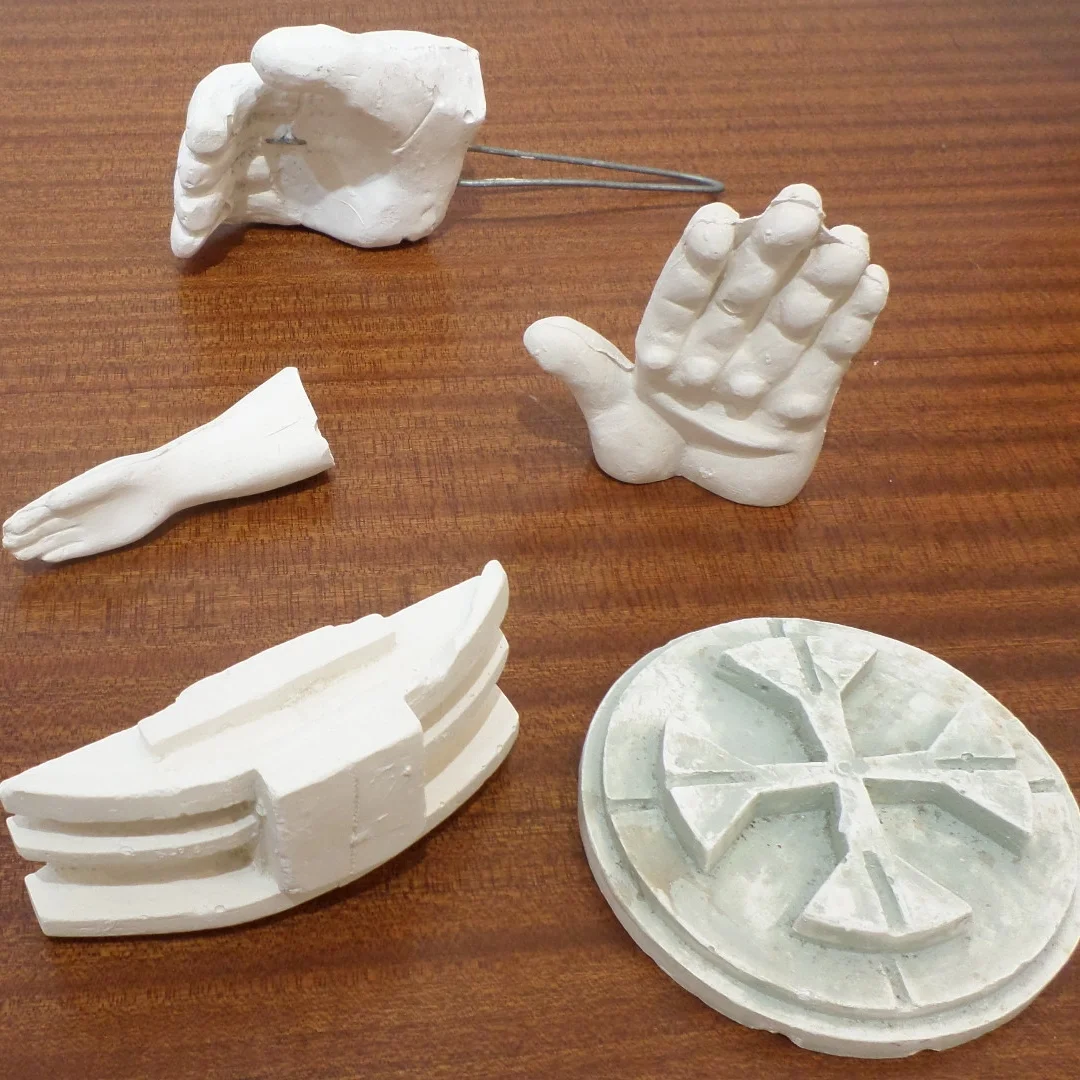I have long admired the work of Eduardo Paolozzi and while having distant recollections of his ceramics in the underground at Tottenham Court Road on visits to London as a teenager, as a police officer in London in the 80's I regularly found reason to walk down to see them. In those days I had no idea of the breadth of Paolozzi's work and certainly no knowledge of his use of plaster.
Robin Spencer, the authority on Paolozzi, wrote about Paolozzi’s use of plaster:
“With regard to the small plasters, some are from ‘ready-mades’ (including boxed model kits, objects found in charity shops etc); others are cast from his own designs.The plasters from the 1990s were not often cast in any other material. A lot of the animals were made specially for the ‘Arche Noah’ , [Noah’s Ark], exhibition in Munich in 1990.”
“He was very keen that the medium of plaster should have a higher status as a sculptural medium than it had previously enjoyed in the 20th century. He took a particular interest in this question after Albert Elsen’s ‘Rodin Rediscovered’ exhibition (1981) which re-valued Rodin’s practice with plaster.”
With our prices starting at just £180 here at Blondes Fine Art , Paolozzi's plasters are an accessible way of collecting one of the greatest British artists of the twentieth century. There is an interesting youtube clip where the comedian , Phill Jupitus talks about his love of Paolozzi and his work and talks about the reconstructed studio of the artist that was bequeathed to the Scottish Gallery of Modern Art. Link below.
https://www.youtube.com/watch?v=-0sxw4K0VK4
Robin Spencer also said,
''Paolozzi's approach, like that of Picasso and the Surrealists, often involved the use of found objects. His studio was filled with plaster casts of the objects that appealed to him - dolls, toys, machine parts etc.Sometimes these objects would simply be cast, at other times they were chopped up and reassembled, or individually coloured by the artist.As with Rodin's approach to plaster, Paolozzi often regarded the plaster as the final work and most of Paolozzi's plasters were never intended for casting or editioning.''

